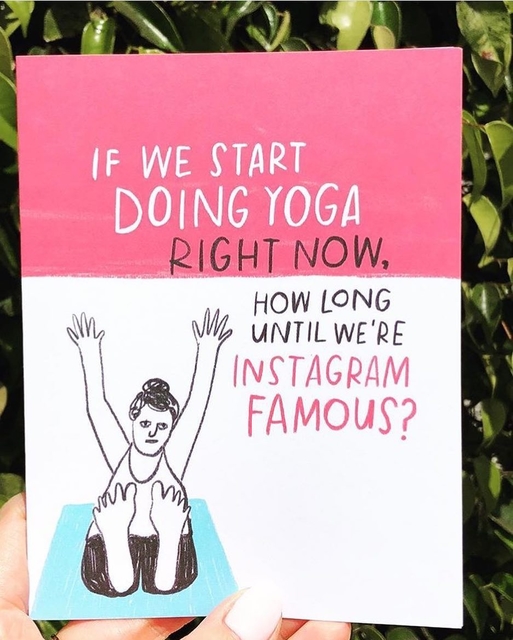Card by Emily McDowell
Note from Liene: I originally published this piece as an Instagram post in July. I’m reposting it here today given two pieces of big news this week: the first being that Instagram’s founders both resigned, taking Facebook (which purchased it for $1 billion in 2012) by surprise; and the second being that WeddingWire has acquired XO Group (parent company of The Knot, The Nest, The Bump, GigMasters, etc) for $933 million and is taking it private.
With the second piece of news breaking this morning, I’ve seen many conversations already that basically say, “The ads stopped working a while ago, so you should be focused on Instagram anyway.” While there’s much to be unpacked in that statement, we’ll save that for another day. In the meantime, if you’re going to step up your Instagram game as an alternative to advertising elsewhere, the post below outlines some key things to keep in mind, especially as Mark Zuckerberg turns to Instagram to make up for the hit Facebook has been taking in revenue and reputation.
• • •
Twitter recently deleted 70 million accounts and some wedding professionals lost thousands of followers overnight. Why? The accounts were fake, bots, or purchased. It’s only a matter of time until Instagram does their own purge again, and it will hit people harder than it did in 2014. Here are some tips on making Instagram work without faking it:
⠀⠀⠀⠀⠀⠀⠀⠀⠀
1. Don’t buy followers, ever, even if they’re “real people” (they’re not). Don’t pay for services that use bots to follow and unfollow and leave fake comments (“keep up the great content ❤️”, etc). These get flagged first as priority for deletion.
⠀⠀⠀⠀⠀⠀⠀
2. Curate or don’t, have a color scheme or not, share only professional work or mix in personal — this all depends on your business, brand goals, target market (“brides” is not a target market, dig deeper) and your own values of what you’re willing to share. There’s no one size fits all. Test to see what works for the people who actually pay your bills, and of course for your own sanity.
⠀⠀⠀⠀⠀⠀
3. Algorithms work differently for business accounts versus personal accounts and not always for the better. The changes in the reach of your business account’s posts are real and not in your head. Instagram wants their ad dollars. Anyone who tells you otherwise needs to study up.
(Also, if you already have a business account linked to Facebook, don’t switch it back to a personal account – you’ll be penalized.)
⠀⠀⠀
4. With the introduction of Questions and IGTV, it’s tempting to focus solely on Instagram, which of course they would love because that’s how they make money. As a business owner, you need to focus on YOUR money, not theirs.
Use Instagram’s features to build trust, show off your creativity, and to stay top of mind. Most importantly use it to drive people to a PLATFORM YOU OWN.
I’ve been teaching this for over a decade and it hasn’t changed: your website/blog/newsletters are the house you own. Social media (Instagram, Facebook, Twitter, Pinterest, etc) are the house you rent.
Facebook could shut down Instagram tomorrow for whatever reasons they like (“We’re re-focusing on our core basics”, etc.) and your followers would be gone. Make the house you rent pretty and make it work for you, but invest the majority of your resources (money, time, energy) building equity in the house you own.
This last point applies to other platforms as well. If you’re spending ad dollars with magazines or online planning sites such as The Knot or WeddingWire and not simultaneously investing in your own website, blog or newsletter, you are still throwing money at someone else’s house while neglecting to build equity in yours.
There is no one platform that will act as a magic wand, solving all your marketing woes. It is not a matter of working smarter, not harder. To make it in an increasingly competitive industry, you will need to work smarter and harder.
















